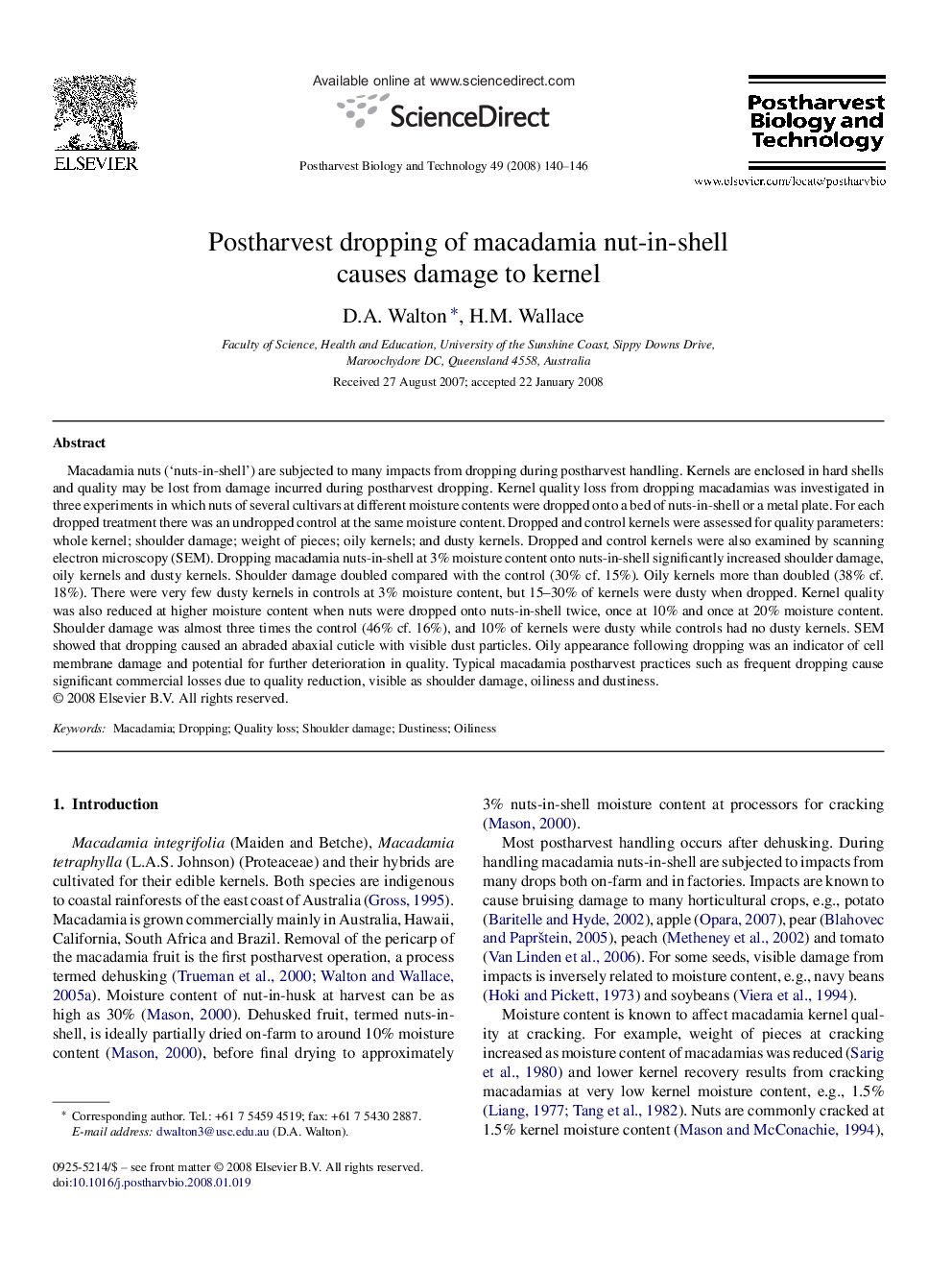| Article ID | Journal | Published Year | Pages | File Type |
|---|---|---|---|---|
| 4519449 | Postharvest Biology and Technology | 2008 | 7 Pages |
Macadamia nuts (‘nuts-in-shell’) are subjected to many impacts from dropping during postharvest handling. Kernels are enclosed in hard shells and quality may be lost from damage incurred during postharvest dropping. Kernel quality loss from dropping macadamias was investigated in three experiments in which nuts of several cultivars at different moisture contents were dropped onto a bed of nuts-in-shell or a metal plate. For each dropped treatment there was an undropped control at the same moisture content. Dropped and control kernels were assessed for quality parameters: whole kernel; shoulder damage; weight of pieces; oily kernels; and dusty kernels. Dropped and control kernels were also examined by scanning electron microscopy (SEM). Dropping macadamia nuts-in-shell at 3% moisture content onto nuts-in-shell significantly increased shoulder damage, oily kernels and dusty kernels. Shoulder damage doubled compared with the control (30% cf. 15%). Oily kernels more than doubled (38% cf. 18%). There were very few dusty kernels in controls at 3% moisture content, but 15–30% of kernels were dusty when dropped. Kernel quality was also reduced at higher moisture content when nuts were dropped onto nuts-in-shell twice, once at 10% and once at 20% moisture content. Shoulder damage was almost three times the control (46% cf. 16%), and 10% of kernels were dusty while controls had no dusty kernels. SEM showed that dropping caused an abraded abaxial cuticle with visible dust particles. Oily appearance following dropping was an indicator of cell membrane damage and potential for further deterioration in quality. Typical macadamia postharvest practices such as frequent dropping cause significant commercial losses due to quality reduction, visible as shoulder damage, oiliness and dustiness.
